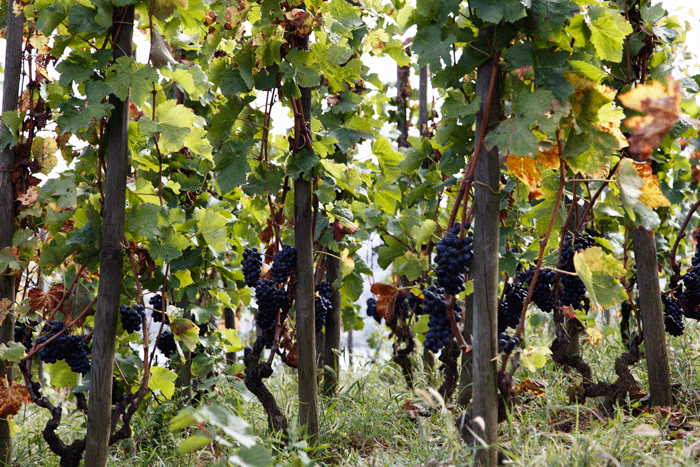Do you taste science or ‘terroir’ in the glass?
Author: Demetri Walters MW
The question of whether you’re tasting science or terroir in the glass is one of those subjects that demands attention. It is fascinating, divisive and, perhaps, not fully understood. But it is also hugely important if we are to fully appreciate what endows individual wines with their specific character.
If we leave aside, for the moment, the question of science’s influence (and how, or if, this can be distinguished from the winemaker’s art), we can begin by identifying and explaining the concept of terroir.
For my part, terroir is not a nebulous French term that explains away the inexplicable. Instead, it is a confluence of factors influencing the ‘somewhereness’ or specific identity of a wine. These include: macro, meso and micro climate; the substrate that the vines are rooted in; those variances that exist in a vineyard (even a very small climat), such as cold pocket, warm pocket, aspect to the sun, gradient, variances in the structure of the top soil, age of the vines; as well as other crucial influences such as water drainage and soil nutrition. Then add to this the more obvious influence of man in the form of tradition and regulation. Taking Burgundy as an example, planting densities of free-standing goblet (bush) vines en-foule (“in a crowd”) at 15,000-plus vines per hectare, inevitably produce a different style of wine than those trellised and pruned in a more conventional mode.
To my mind, science and terroir need not be mutually exclusive, in fact they can be one and the same.
Some terroirs, like the legendary Cru Cannubi in Barolo, are better understood than other, more recently planted, vineyards. (Maybe this is the old world’s advantage over the new?) Terroir, after all, exists everywhere: when a vineyard is planted and the first wine from it is made, the terroir is not created, it is merely discovered. So where does science come in? Even before the new vines go into the ground, science is involved: soil samples are taken, and the most appropriate clone(s) of the vines are identified. These are then grafted onto an appropriate root stock. The vines are trellised (or not) in such a way as to optimise wine quality in the context of the vineyard and style of wine being made. This might be called art by some, but it is in fact science.
A producer’s modus operandi in the vineyard, whether conventional, sustainable, organic or biodynamic, will inevitably involve science. The anthroposophical approach of biodynamicists, unconventional by today’s standards, is still scientific in so far as it involves a well-considered process, specific preparations, accurate applications and so on and so forth. That the process is difficult to explain, or considered ‘mumbo-jumbo’ by some, does not necessarily preclude its scientific nature. It is merely unorthodox. Regardless of the approach then, even the most ‘natural’ producers seek to display a vineyard’s signature, a commune’s character or, as in the case of many champagnes or multi-regional wines, the sense of place of a greater region. This involves scientific endeavour.
We haven’t even mentioned technological advances in the winery. In brief, wines can be ameliorated through a variety of modern scientific techniques (some simple, some very complex), ranging from the simple addition of water (occasionally used by top Californian producers) and euphemistically termed ‘humidification’, through to vacuum flasking, spinning cone column, reverse osmosis, a variety of filtration membranes, remote tank-cleaning methods, and quality control technologies such as FOSS wine scan. This list is cursory and does not even take into account the addition of stabilising agents. Of course, many wines are not made with the any of the techniques listed, but they are still made scientifically, with great care and scrutiny, regardless of their fermentation vessel, handling, additions and maturation process. In short, science does not mean over-intervention, nor does natural equate to an art that eschews science.
So, can science remove evidence of terroir? I would say yes and no…sitting on the fence here. Blossom Hill’s White Zinfandel might consistently show a bright pink blush, delicate red-berried charm, 10.5% abv and approximately 35g/l residual sugar, but is its style not part of its terroir? This style of wine has indeed obscured all sense of place. Or has it? The hand of man has to be included in the pantheon of those elements influencing terroir. It does not make me an anti-terroirist (errrr) when I extend this argument to include man’s manipulation of a wine to create a specific style closely associated with a region. Champagne combines terroir with second fermentation in bottle and long lees ageing. I would argue that mass market wines employ science in order to produce a style of wine that can also be recognised as hailing from a specific place, albeit not with a particularly precise sense of place. In short, science and terroir are closely related. What do you think?
If this has piqued your interest, why not join Demetri to dissect the matter in more detail at our Science vs Terroir tasting in the cellars on Monday 23 June.




Right: science’s use does not preclude the expression of terroir. But not all terroirs are created equal, some being negligible based on style, others clearly imparting faults e.g. deep soils and poor drainage yielding vigorous vines, dilute wines.